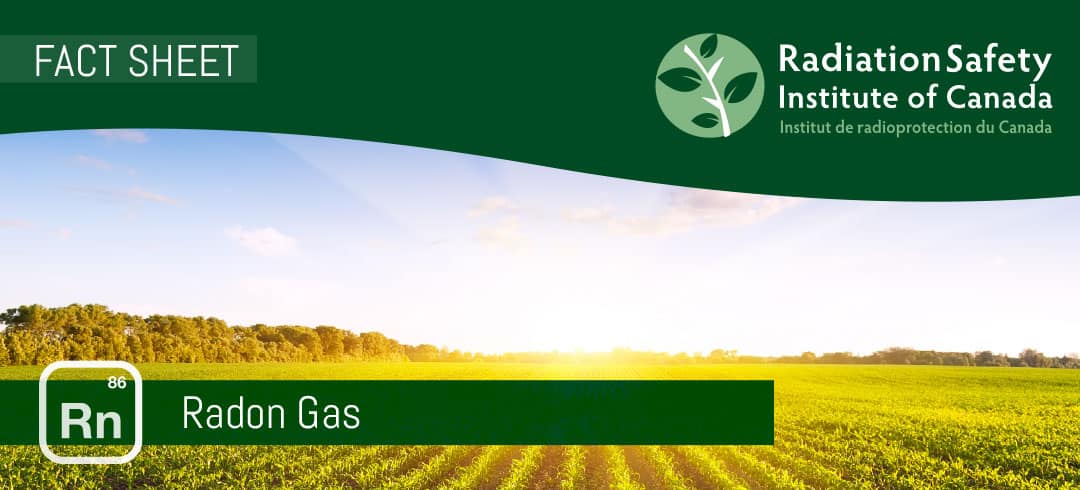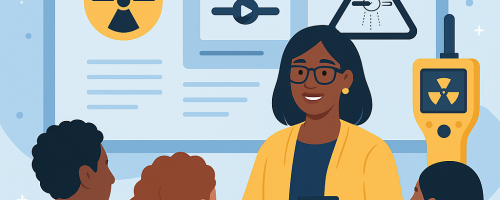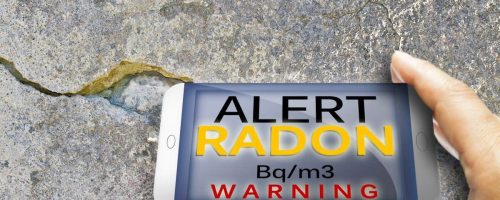What is radon gas?
Radon is a radioactive gas that cannot be detected by our human senses. It is colourless, and has no taste or smell to it.
Where is radon found?
Radon occurs naturally from the breakdown of uranium in soils and rock, and can be found all over Canada. Being a gas, radon can move through cracks and spaces in the rocks and soil, and can also “hitch a ride” with water flowing through the rock where it is created. When radon is released from the soil/rock to outdoor air, it is generally found in very low concentrations that we don’t need to worry about. However, if radon enters the buildings where we live and work, it can build up to high levels, well above what is naturally found outdoors. Radon can seep into our buildings where they are in contact with the ground/soil (for example, though cracks in the foundation walls, unsealed openings around drain pipes, and via open sump pumps), and it can also be brought indoors with the water that we use, particularly if the water is from a source of ground water (as opposed to surface water like rivers and streams). A cross-Canada study done by Health Canada, showed that we can find homes with elevated radon levels all across the country.
What are the health risks?
Radon gas is radioactive. As radon gas decays, it forms tiny radioactive solids that tend to stick to existing dust particles in the air. We can breathe in these radioactive particles, and they tend to get trapped and stay in our lungs. The decay of these particles results in the release of alpha particles, which interact with the lung tissues and can cause damage to the cells, increasing a person’s long-term risk for lung cancer. The higher the radon concentration and the longer the exposure, the higher is a person’s risk for developing lung cancer over time. And, for smokers, it is important to note that mixing radon exposure with smoking causes an even higher level of risk for lung cancer – more than the individual risks added together!
How do you know if your radon levels are elevated?
The only way to know if radon levels are elevated is to test for radon, but don’t worry, it is actually quite easy to do. Radon concentration levels do vary over time (day to day and week to week), so when measuring radon gas concentration in our homes or workplaces, it is best to perform a long-term test to measure the average concentration over 3 to 12 months. Health Canada recommends that Canadians test for radon during the heating season (approximately October to April), and that we test in the lowest occupied level of our homes and businesses. Long-term radon test kits can be ordered on line (e.g., from the Radiation Safety Institute of Canada or other suppliers) or can be picked up at many home improvement stores (just be sure to get a long-term test as opposed to a 2- or 7-day test, as long-term tests provide a much more reliable assessment).
How to minimize exposures if levels test to be high?
If testing reveals long-term average radon concentrations above 200 Bq/m3, Health Canada recommends that steps be taken to lower the radon levels. These remedial actions can be as simple as sealing cracks or joints/gaps in the foundations, installing a lid over a sump-pump to seal out that air from the building air, or increasing ventilation in the home. Alternatively, and particularly if these simple measures are not enough, a radon remediation professional can be brought in to assist in reducing radon levels, usually at a cost that is much less than other home maintenance issues such as a furnace or roof replacement.
Resources
To learn more, visit the following websites:
Radon: is it in your home
Radon reduction guide for Canadians
Find a radon measurement or mitigation professional







